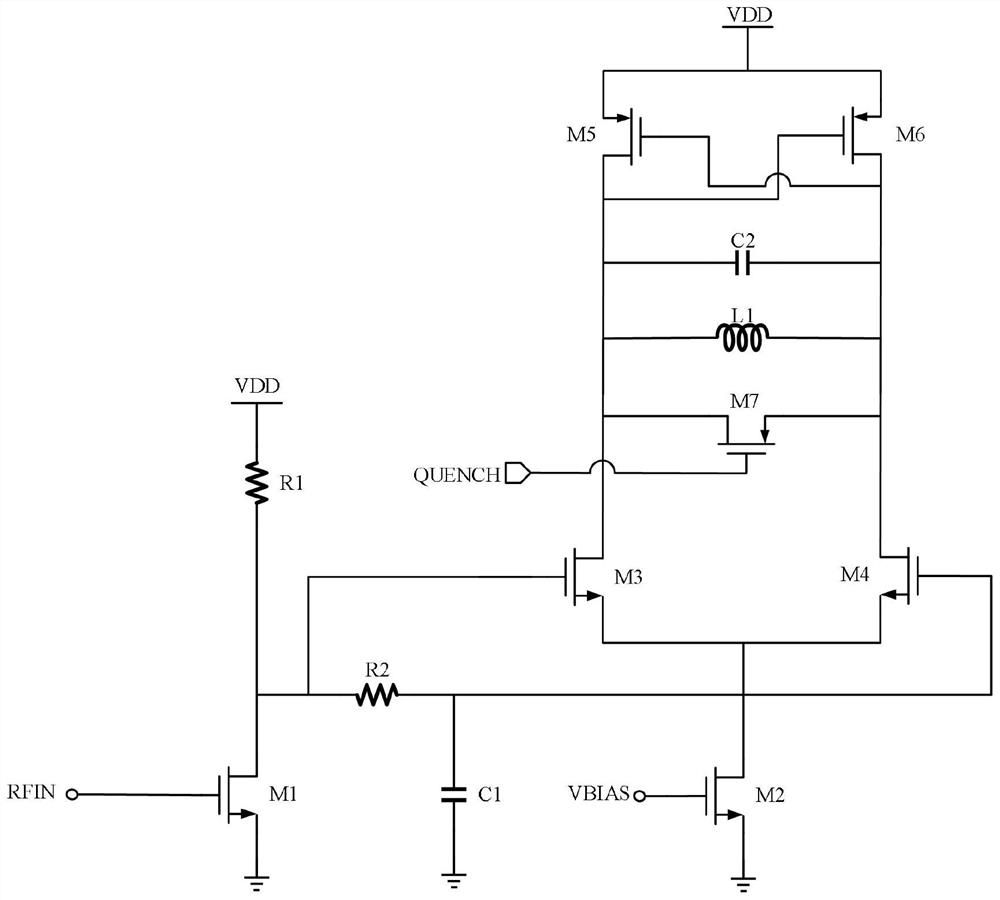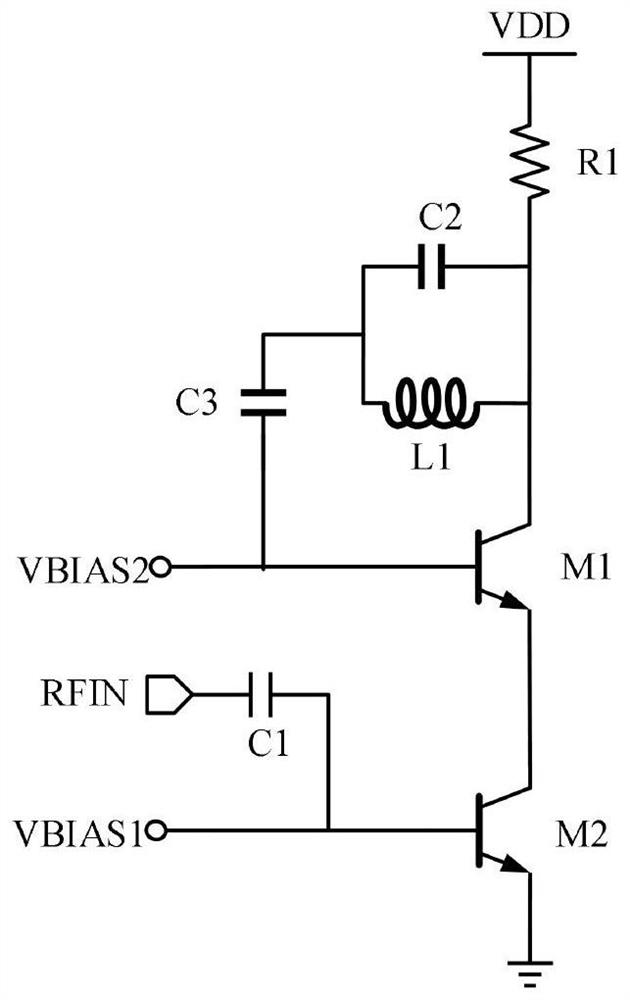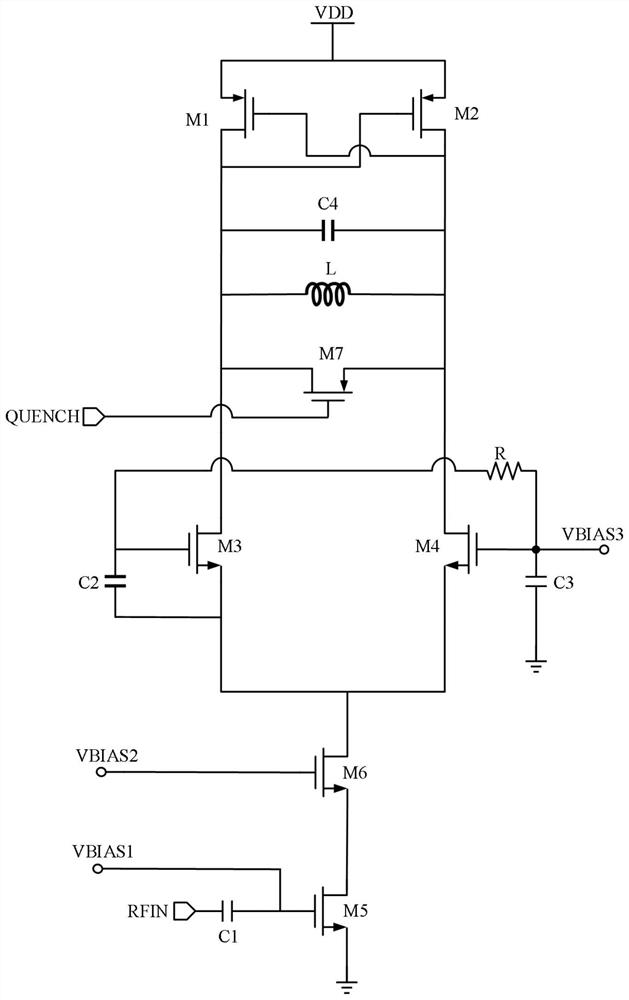Current multiplexing low-power-consumption differential super-regeneration radio frequency front-end circuit
A technology of current multiplexing and RF front-end, which is applied in the direction of electrical components, transmission systems, etc., can solve the problems of power supply common-mode noise suppression decline, etc., achieve good power supply rejection ratio, suppress common-mode noise, and solve the problem of poor common-mode rejection ratio Effect
- Summary
- Abstract
- Description
- Claims
- Application Information
AI Technical Summary
Problems solved by technology
Method used
Image
Examples
Embodiment Construction
[0015] The present invention will be further explained below in conjunction with the accompanying drawings.
[0016] A current multiplexing low-power differential super-regenerative radio frequency front-end circuit includes an LC regenerative oscillator circuit and a low-noise amplifying circuit. like image 3 As shown, the LC regenerative oscillator circuit includes a PMOS transistor M1, a PMOS transistor M2, a PMOS transistor M7, an NMOS transistor M3, an NMOS transistor M4, capacitors C2-C4, an inductor L and a resistor R. The source terminals of the PMOS transistor M1 and the PMOS transistor M2 are connected to the DC voltage VDD, and the gate terminals are respectively connected to the drain terminals of the other side to form a cross-coupling state to provide negative resistance. The drain terminals of the PMOS transistor M1 and the PMOS transistor M2 are connected to the drain terminals of the NMOS transistor M3 and the NMOS transistor M4 respectively, and the source ...
PUM
 Login to View More
Login to View More Abstract
Description
Claims
Application Information
 Login to View More
Login to View More - R&D
- Intellectual Property
- Life Sciences
- Materials
- Tech Scout
- Unparalleled Data Quality
- Higher Quality Content
- 60% Fewer Hallucinations
Browse by: Latest US Patents, China's latest patents, Technical Efficacy Thesaurus, Application Domain, Technology Topic, Popular Technical Reports.
© 2025 PatSnap. All rights reserved.Legal|Privacy policy|Modern Slavery Act Transparency Statement|Sitemap|About US| Contact US: help@patsnap.com



